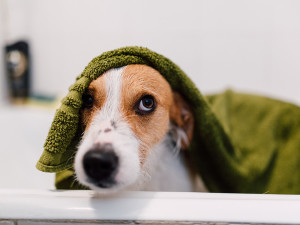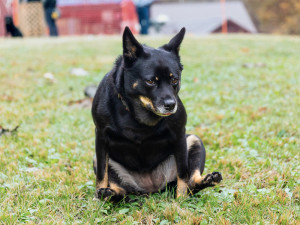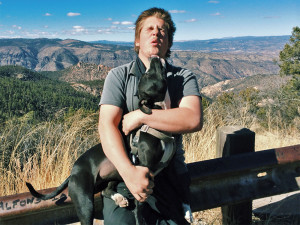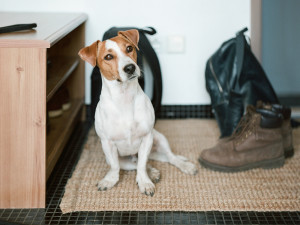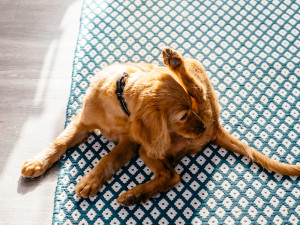Dog Anal Glands: Everything You Need to Know
Know what to expect and spot warning signs as early as possible.
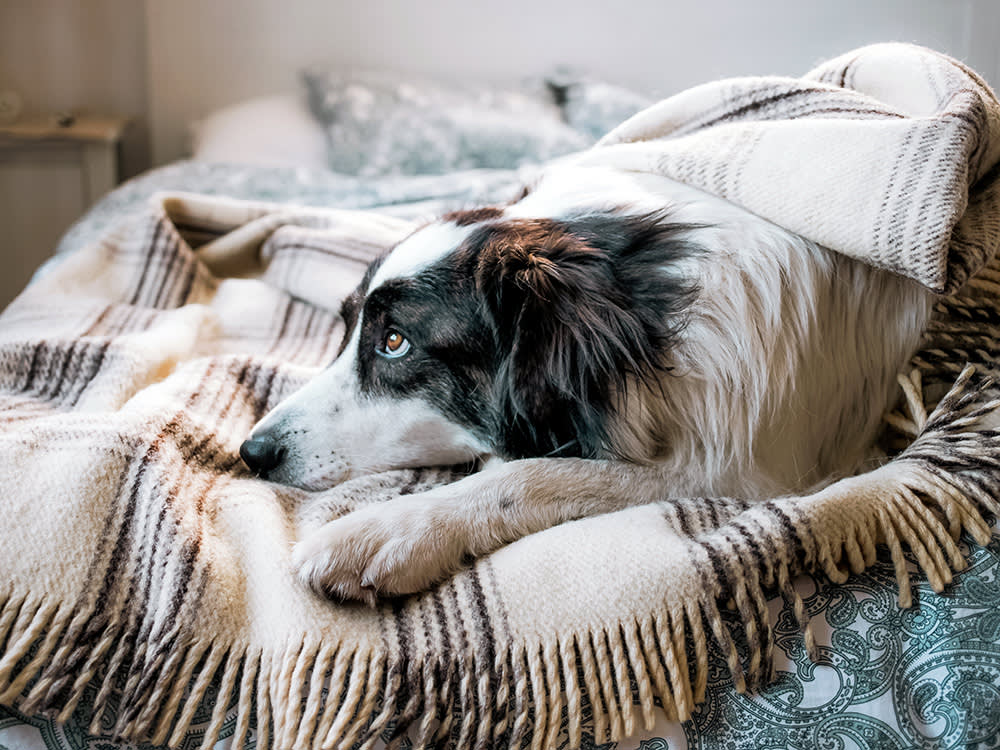
Share Article
In This Article:
What Are Anal Glands? Signs of Anal Gland Problems What Causes Anal Gland Problems in Dogs When to See a Vet for a Diagnosis Anal Gland Treatment Options How to Prevent Anal Gland Problems in Dogs Frequently Asked Questions
If you are a dog parent, you’ve probably heard of anal glands or anal sacs at some point – and the name is just as unpleasant as the contents that can come out of them. But just how much do you need to know about these glands, and when should you be worried about them? Read along for some information on these pouches unique to our pets, plus when they might be giving your dog an issue.
Main takeaways
Dogs will typically express their anal glands on their own.
In some cases, anal glands can become "impacted," which can lead to distension, infection, abscess formation, pain, and rupture of the gland if left untreated.
If you notice your dog vocalizing/whining, especially while having a bowel movement, scooting or dragging the hind end excessively, licking the anus or base of the tail excessively, or any bloody or purulent discharge from or around the anus, have your pup evaluated by a veterinarian.
What are anal glands?
Anal glands or sacs are two small pouches on the inside of a dog’s anus, one on each side. These sac or gland secretions contain pheromones or a specific scent that can give other dogs information, such as social ranking, identification, defense, and more. The contents within anal glands will typically be extracted when a dog has a bowel movement.
Why do dogs have anal glands?
Dogs have anal glands because they contain a secretion containing pheromones, which can give dogs information about one another; this is the reason dogs smell each other’s butts often.
How much do you spend on your pet per year?

Common issues associated with anal glands
Dogs will typically express their anal glands on their own through muscular contractions when they have a bowel movement. In some cases, these sacs can become “clogged” (referred to as “impacted"), which can lead to distension, infection, abscess formation, pain, and rupture of the gland if left untreated.
Signs of anal gland problems
Recognizing discomfort in dogs
Any change in a dog’s normal behavior could be explained by them experiencing discomfort. Inflamed, clogged, or infected anal glands are typically painful. Dogs with these issues will usually show signs of discomfort, which can present in a few different ways: Vocalizing or whimpering during defecation, licking the anus excessively, reluctance to have a bowel movement due to discomfort, and scooting the hind end on the ground. You might also notice a foul, metallic odor coming from the dog’s hind end if the glands are very full and not expressing properly.
Behavioral changes that indicate anal gland issues
Several signs of pain or discomfort can present as behavioral changes. A dog experiencing pain from an infected or inflamed anal gland may be reluctant to go on walks or have a bowel movement, have a decreased appetite or energy level, and may whine or vocalize more than normal. Occasionally, dogs experiencing pain may be more reactive, especially if the tail or near their hind end is touched.
Physical symptoms
Physical symptoms of pain that may be related to an anal gland issue could include a dog scooting their hind end on the ground, licking their anus or hind end excessively, whimpering or vocalizing when having a bowel movement, or bloody discharge from the anus. If these or any of the above-mentioned signs are noticed, it is recommended that your dog be evaluated right away.
What causes anal gland problems in dogs
In general, the reasons why some dogs develop anal gland problems are not entirely clear. However, there are theories, including:
Diet
A not well-balanced diet, especially one that does not contain enough fiber, may lead to irregular stools and therefore reduced emptying of the anal sacs. In dogs who have frequent issues with their anal glands, a fiber supplement is sometimes recommended.
Breed and genetic predispositions
Some dog breeds may have a genetic predisposition for developing anal sac issues.
Obesity and lack of exercise
One factor that contributes to regular bowel movements in dogs is regular exercise. Exercise helps improve gut motility and more normal bowel movements, which can help with regular expression of the anal sacs. If a dog regularly requires manual expression of the anal sacs, we will often ask pet parents if the dog is getting enough exercise.
When to see a vet for a diagnosis
If you notice any of the above-mentioned signs, including vocalizing/whining, especially while having a bowel movement, scooting or dragging of the hind end excessively, licking the anus or base of the tail excessively, or any bloody or purulent discharge from or around the anus, it is best to have your pup evaluated by a veterinarian. These are painful conditions that can be easily treated if caught early.
Anal gland treatment options
There are a few options for treating impacted anal glands, including:
Manual expression of anal glands
Most often, manual expression of the anal glands should occur at the first signs of a dog scooting. In dogs who have difficulty expressing their anal glands on their own, this may need to be done once every three to four weeks but varies for each dog. This should preferably be done by a veterinary professional, especially if your dog is experiencing pain, so caution can be taken to prevent further harm, and appropriate, safe pain medication can be provided to your dog. If done more routinely and as a preventive measure, some groomers are trained to express anal glands, but this should only be done if your dog is good at handling such treatments.
Dietary and lifestyle modifications
In any dog who requires more routine anal gland expressions, it is best to consider a fiber supplement as well as regular exercise. This can help regulate their gut and encourage regular bowel movements, which might help prevent anal gland impacting from occurring.
Surgery
In some cases, recurrent anal gland issues (infections, abscesses) may lead you and your veterinarian to discuss the removal of the anal gland. This is a specialized surgery and is not performed routinely for anal gland issues. This surgery is typically performed by a board-certified veterinary surgeon to prevent side effects that may be irreversible, such as the loss of ability to control bowel movements. The decision to perform this surgery is one that is made after careful consideration with your veterinarian.
How to prevent anal gland problems in dogs
Once a dog develops clinical signs of anal gland issues or develops an anal gland infection or abscess, prevention becomes key. This is most frequently done by performing regular anal gland expressions at your vet’s office. These typically can be done routinely, every three to six weeks. The cadence of how often this should be done will vary depending on the dog, and the veterinary team can help decide on this frequency based on how full the anal sac is at the time of each visit and if your dog is developing any clinical signs at home.
For dogs who have never developed anal gland issues before, a few good ways to prevent issues are feeding your dog a balanced, veterinary-formulated diet with fiber and ensuring your pet gets regular exercise, including one to two long walks each day.
FAQs
How do you know if a dog needs their glands expressed?
A dog who needs their anal glands expressed will often show signs of discomfort, such as scooting or dragging their hind end on the ground, licking the base of the tail or their anus excessively, or if a foul odor is noticed coming from your dog’s hind end.
How to relieve dog anal glands
A dog’s anal glands can be expressed manually, ideally by a veterinary professional. This can be done regularly, and the frequency is specific to your dog, which can be determined by the veterinary team.
Can I empty my dog’s glands myself?
In some instances, especially when a dog needs their anal glands expressed frequently or veterinary visits stress your dog, your veterinary team can help teach you how to express the anal glands at home. However, this isn’t for every pet parent (or every dog), so ask your vet if this is right for you.
What causes dogs’ anal glands to fill?
Anal glands normally fill with a substance containing pheromones and other chemicals. Dogs should express their anal glands naturally when they have a bowel movement.
References
Collins, Brian. “Anal Sac Diseases.” Cornell University College of Veterinary Medicine, 1 Mar. 2023, www.vet.cornell.edu/departments-centers-and-institutes/riney-canine-health-center/canine-health-information/anal-sac-diseases.opens in new tab

Dr. Gabrielle Fadl, DVM
After graduating from Kansas State University College of Veterinary Medicine, Dr. Fadl returned to the New York area to pursue a one-year rotating internship and has been working in general practice since. Dr. Fadl loves working in the pet space to foster the powerful human-animal bond. She hopes to continually learn and grow to practice the best quality medicine. Her motto is “Keep calm and try to take it as it comes.”
Related articles
![Dog standing in the bathtub covered with a green towel after a bath.]()
How to Express Dog Anal Glands Safely and Effectively at Home
Yeah, it’s super gross — but your pup will thank you.
![Pug dog scooting on a wooden floor in the kitchenFunny dog enjoying scratching his bum on grass at public dog park.]()
Home Remedies For Dog Scooting
A vet on what to do when “anal sacs go bad.”
Why Does My Dog Smell Like Fish?
It’s not a very pleasant odor, to say the least.
Why Does Your Puppy Chase His Tail?
And when to talk to the vet.
![Adorable dog sitting on a rug next to some boots scooting]()
Scooting After Pooping: Weird Things Dogs Do Explained
Dog trainer Emma Bowdrey helps explain this common canine behavior.
![A mini golden doodle puppy licking and grooming itself.]()
Treatment for Your Dog’s Bleeding Anus: Home Remedies and Medical Options
It’s not a pretty problem, but here are your solutions.

